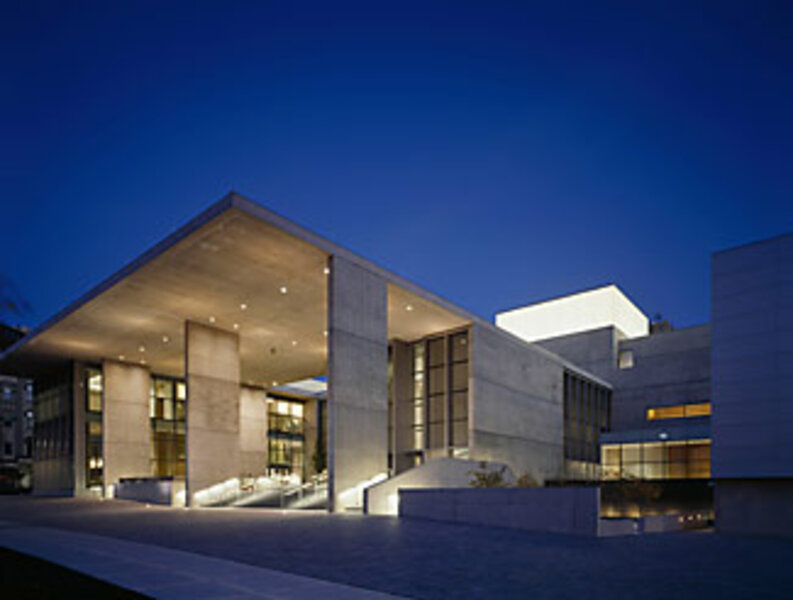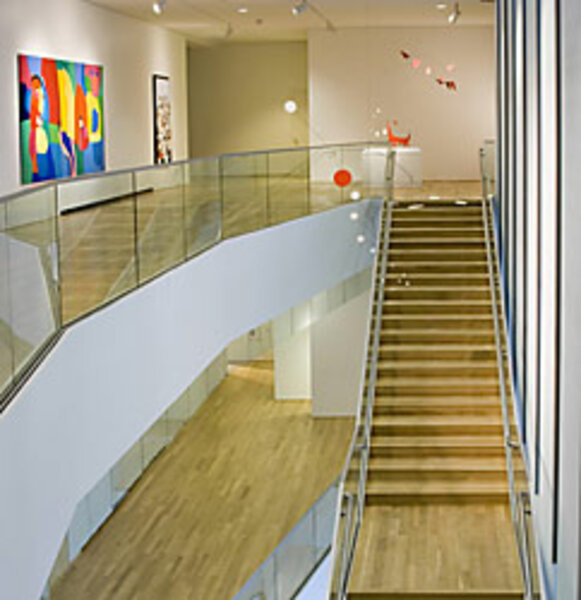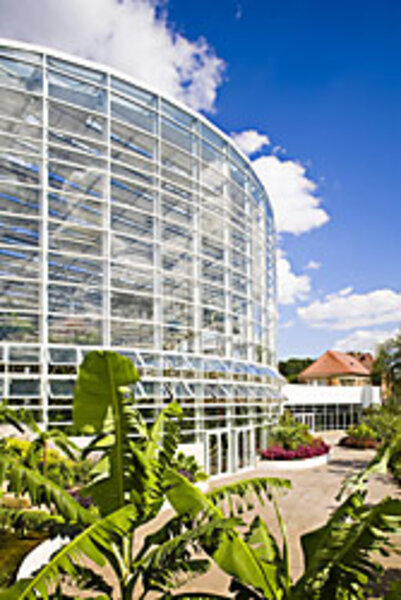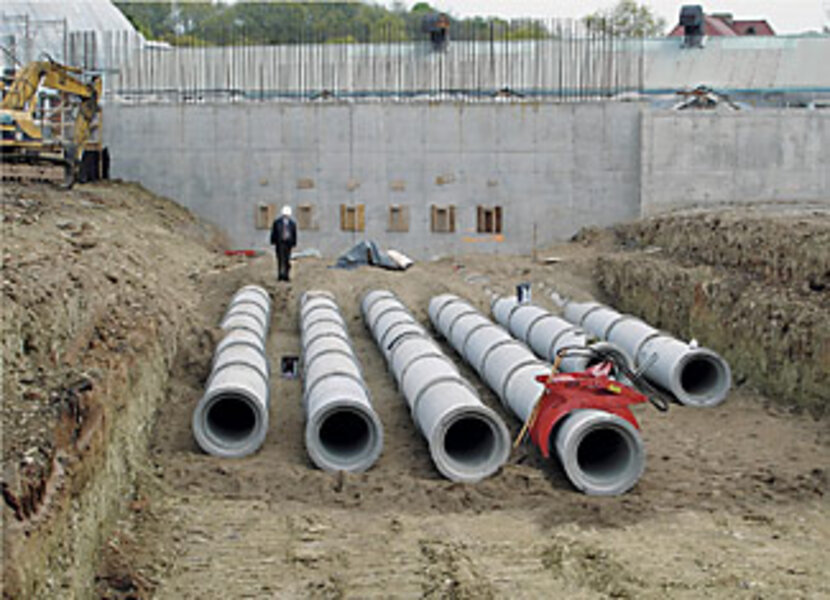Museums sprout 'green' architecture
Loading...
| Grand Rapids, MIch.
Museums tend to be famous for what's on their walls. But at the new Grand Rapids Art Museum (GRAM) in Michigan, the art has taken a back seat to the walls themselves.
Last month, the $75 million, 125,000-square-foot building became the first art museum in the country to receive a LEED Gold certification from the US Green Building Council in Washington. (LEED, which stands for Leadership in Energy and Environmental Design, is considered the benchmark for green construction.)
The fact that a second museum, the Museum of Contemporary Art in Denver, will soon gain Gold status is just one sign of the greening of US museums.
Forget Corinthian columns: Today's museums have features like green roofs – such as on the new wing at the Institute of Fine Arts in Chicago – or goats as part of the maintenance team, as at the Getty Center in Los Angeles, the first facility in the US to qualify for LEED certification on an existing building.
"I cannot count the number of institutions that are doing serious green stuff. That's how huge it is," says Sarah Brophy, coauthor of "The Green Museum," to be published later this spring. Ms. Brophy says that green construction started becoming a serious consideration for museums about six years ago – with zoos, aquariums, and children's museums leading the way.
"There were concerns about walking the talk – if you're educating about the environment, you should be caring for it," she says. Fine art museums, she says, have caught on to the concept after being introduced to it by architects who had worked on green projects for the for-profit sector, which – with its focus on the bottom line – was faster to adopt energy-cutting construction.
That bottom line has become more attractive as green-building costs have fallen, explains Ashley Katz, spokeswoman for the US Green Building Council.
Rapid payback for ecodesign
A 2006 study by Davis Langdon, a construction consulting firm, found that building an environmentally friendly project costs, on average, as much as a traditional one. A Gold- or Platinum-ranked LEED-certified building costs more, Ms. Katz says, but the energy savings means that an organization should be able to recoup those extra costs within two years.
While green building may originally have had a reputation as the unbleached cotton T-shirt of the architecture world, that has changed.
"People used to think that if it's going to be green, it's going to be ugly. That's not at all the case," Brophy says. In fact, the architecture critic from the Cleveland Plain Dealer protested that the Grand Rapids Art Museum, designed by Los Angeles-based Workshop Hakomori Yantrasast (wHY), wasn't getting enough credit for its "sheer good looks."
It has, however, boosted the city's profile as an innovator in design. In fact, thanks in part to philanthropists such as Peter Wege, Grand Rapids is No. 5 on the list of US cities with the most LEED-certified buildings – tied with Pittsburgh and Washington.
Pittsburgh is home to the Phipps Conservatory and Botanical Gardens, which Brophy calls one of the two premier green museums in the country.
The director of the Phipps, Richard Piacentini, can describe every step the conservatory has taken to become more environmentally sustainable, from banning bottled water to designing a greenhouse with an open roof and "earth pipes" dug to cool it.
For example, a visitor who arrives on a crowded weekend doesn't park on asphalt, but on an overflow lot that consists of a lawn with a buried plastic grid.
"You can drive a truck on it," and not hurt the grass, Mr. Piacentini says.
At the Tropical Forest Conservatory, which opened in 2006, visitors can get an eyeful of the solid-oxide fuel cell that uses natural gas to power the greenhouse.
The conservatory's energy bill dropped from $16,800 to $2,400 per year, but the Phipps isn't resting on that 75 percent drop.
This fall, the conservatory will break ground on a greenhouse that Piacentini and his team hope will become the first Living Building in the United States – one that is completely self-sustaining and relies exclusively on renewable energy.
Organic waste will power the fuel cell that supplies the building with electricity, and a combination of constructed wetlands and a "living machine" (with anaerobic bacteria) will treat the sewage for the entire complex.
"Museums have not tended to brag about what they're doing [in the environmental field], since there's an assumption you're cutting back," Brophy says. But she sees that changing.
Employees keep brainstorming
Indeed, at the Getty Center, which earned its Silver ranking in March, the LEED plaque is proudly displayed at the entrance. Joe May, manager of maintenance, planning, and support, says the Getty's staff continues to brainstorm ideas to improve energy-efficiency, from waterless urinals, which the city of Los Angeles has just approved and which could save the Getty 1.5 million gallons of treated water a year, to having an e-waste drop-off, where employees could bring old batteries, computers, and DVD players, to make certain they're being properly disposed of.
"[Green measures] are going to become as natural and automatic as full accessibility and inclusivity," Brophy says. "Within a year, the public is going to be asking all museums about their environmentally sustainable behavior. They're going to want to see evidence. That will push all museums. There's a pretty substantial learning curve, but the entire population is going to be going through it, and museums will be part of that group."








